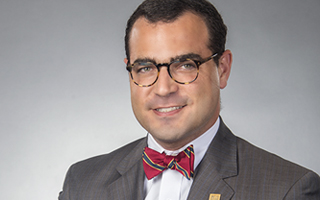Stretch IRAs are dead. What you need to know about the SECURE Act.
January 10, 2020
Legal Newsletters


Attorney Forrest J. Bass practices in the area of Trusts and Estate law.
Major changes to the laws governing retirement accounts became effective January 1, 2020 in a piece of legislation known as the SECURE Act.[1] Most significantly, the stretch IRA rules that previously allowed the beneficiary of an inherited retirement IRA or 401(k) to take minimum distributions over the beneficiary’s life expectancy have been largely eliminated. Here are some of the highlights of the new law:
- Change to Inherited IRA Rules
- Under the SECURE Act, qualified beneficiaries of inherited retirement plans must withdraw the assets from the account within 10 years of the participant’s death, with few exceptions. There are no required minimum distributions (“RMDs”) prior to December 31 of the year containing the 10th anniversary of the account owner’s death. Note that under circumstances, non-qualified beneficiaries may be subject to a five-year payout.
- The 10-year rule does not apply to surviving spouses, minor or disabled children or beneficiaries who are fewer than 10 years younger than the plan participant. These individuals will still be able to stretch RMDs over his or her life expectancy. However, note that once a minor child reaches the age of majority, the 10-year rule will apply.
- IRAs Payable to Trusts
- Previously, retirement plans could also achieve stretch status when paid to a trust upon the account owner’s death. The trust would be required to take RMDs from the IRA; however, the terms of the trust dictated what distributions were to be made outright to the beneficiary of the trust. In light of the changes made in the SECURE Act, careful attention will need to be paid when planning to use a trust as a beneficiary of a retirement account. Naming trusts as beneficiaries may still be advisable in certain circumstances. However, a careful review of the new rules will need to be undertaken.
- Change to Required Beginning Date and Contribution Age Limit
- Under the SECURE Act, a retirement plan owner is not required to RMDs until reaching age 72. Previously, the law required RMDs to begin at age 70 ½.
- Additionally, account owners can contribute to retirement accounts as long as they are still working. Previously, contributions could not be made past age 70 ½.
- Effective Date
- For the most part, changes to the beneficiary rules apply to accounts whose owner dies after January 1, 2020. However, some accounts whose owner died before January 1, 2020 may also be impacted.
- What You Need to Do
- Every individual who owns a retirement account should review their account structure, beneficiary designations and estate plans as soon as possible. Contact the attorneys at Farr Law Firm to discuss the SECURE ACT in further detail.
[1] The full name of the SECURE Act is the SETTING EVERY COMMUNITY UP FOR RETIREMENT ENHANCEMENT Act and had been lingering in Congress for quite some time.
